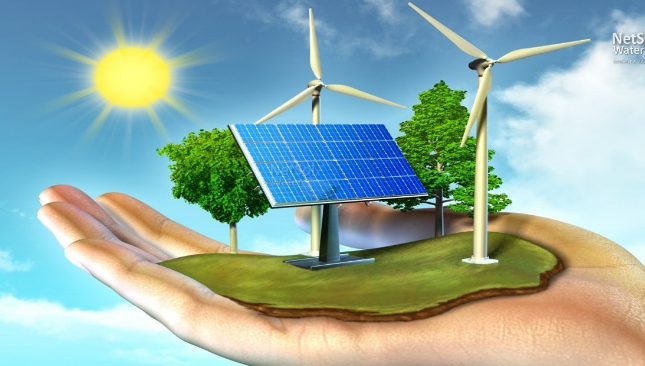Taming Nature: Using Innovation to Create the Future of Renewable Energy
The present shift towards renewable sources of energy is not a fad; it is the demand of a sustainable future. Adoption of green technologies and integration of those into everyday life will lead to reduced dependence on fossil fuels and curbing climate change. In this quest for finding remedies, the power of nature has various options-solar, wind, and hydropower-which should seriously be considered and could easily help shape the energy landscape.
Diving into the potentials of these renewables discloses novel approaches toward value chains in energy production and use. Efficient system development will yield better utilization of natural resources by the communities for cleaner and more reliable energy. Deployment of these technologies within existing infrastructures is crucial to widespread promotion and enhancement of energy security.
The shift towards renewable energy is something very hopeful and brings new possibilities toward making the world even more sustainable. Understanding the future of energy empowers individuals and businesses to participate in this very important change.
Key Takeaways
- The potential of renewable sources to reduce dependence on fossil fuel is huge.
- New technologies further facilitate the conversion rate of green energy.
- Integrating with existing systems will be a must if renewables are to reach wider acceptance.
Innovating Green Technologies
Green innovation technologies are the significant keys to renewable energy development. There are two major areas being developed: one is in solar power, and the other pertains to wind energy. Both these technologies pose alternatives to fossil fuel by offering cleaner options and developing better ways of energy usage.
Solar Power Advancements
Recent development in the technology of solar power has left it at an efficient and accessible level. First is the development of the bifacial solar panel, for instance. They show the capacity to capture sunlight from both sides, which increases energy production by up to 30%.
The other critical improvement includes that achieved by the incorporation of perovskite materials. These materials are less expensive to manufacture and can be produced in a more flexible manner, thus enabling integration on a variety of surfaces, such as building facades and even windowpanes.
Similarly, long strides have been taken in the field of energy storage systems. High-capacity batteries store energy from the sun to be utilized when the sun is not present. These changes definitely mark the use of solar power as an even more reliable source of energy.
Wind Energy Breakthrough
It is not only solar energy where breakthroughs are noticed, but wind energy also saw its breakthroughs. One of the sources that mark rapid growth includes the offshore wind farms due to higher and more consistent winds. They allow for generating much more electricity compared to land-based turbines.
Recent innovations in wind turbine design include taller towers and larger blades. The reason is simple: taller towers capture stronger winds, while larger blades catch more energy.
Another game-changing element is that of smart technology. Advanced sensors and software optimize turbine performance, adjusting for changing conditions in the wind. Together, these improvements can help lower costs, ramp up energy production, and make wind energy a more viable source of power in the future.
Integrating Renewables into the Grid
Integration of renewable energies into the current grid is the pathway to a sustainable energy future. This is achieved through more advanced technological and policy-related measures for completeness in terms of reliability and effectiveness.
Smart Grids and Energy Storage Solutions
Smart grids have a very important role in the integration of renewable energy. They use advanced technology in monitoring and managing electricity in a better way. The result is higher levels of efficiency through real adjustments.
Energy storage solutions, including batteries, are required to maintain demand and supply in balance. Any excess energy generated through a renewable source can be stored for later use. Reliability of this kind makes renewable energy more acceptable as a primary source.
Technologies like pumped hydro storage, lithium-ion batteries, and flywheels enhance the efficiency in managing energy. Investments in such technologies should be one for maintaining grid stability with a higher share of renewables.
Policies for Sustainable Energy Transitions
Policy plays a very important role in facilitating the integration of renewable energy into the grid. Most governments are formulating policies that will help accelerate clean energy uptake. Many of the policies feature incentives for energy efficiency and renewable projects.
This transition requires huge cooperation among the stakeholders. There should be co-operations between utilities, government agencies, and private companies. Well-structured frameworks and guidelines to invest in smart grids as well as energy storage systems should also be available.
Such policies could create a sandbox for innovation and development into the renewables. These could be through research and development programs that could have impacts leading to breakthroughs in their grid integrations. While developing this collaboration, some challenges could be overcome toward long-term sustainability.

Also Read :
- How Renewable Energy Technology is Gaining Ground in South Africa
- Renewable Energy Engineering: Designing Sustainable Power Systems
- Sustainable Engineering: Innovations in Renewable Energy
- Automotive Engineering: The Shift Towards Electric Mobility
- The Environmental Impact of NFTs and Crypto Mining: Facts vs. Myths
